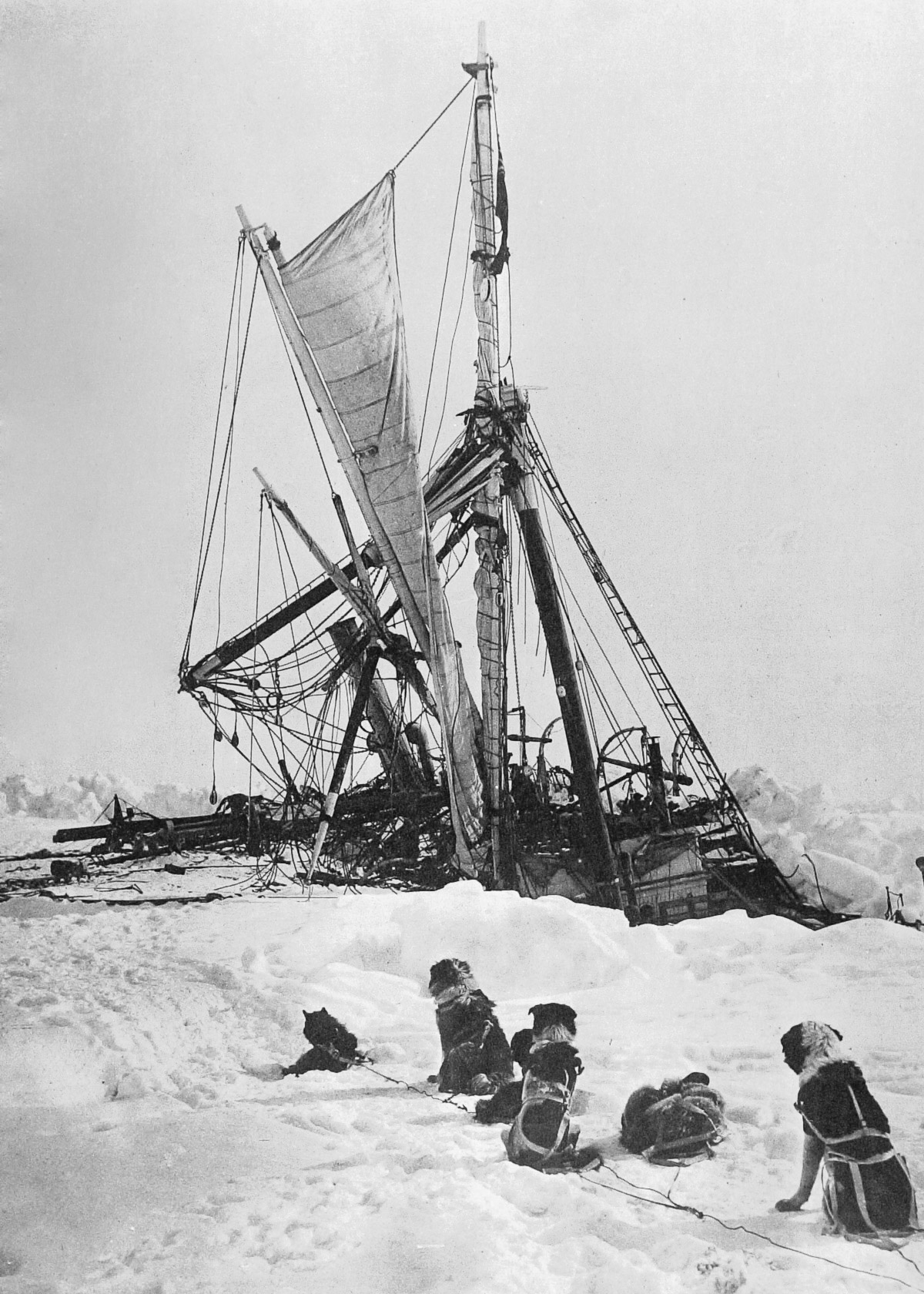People have been coming to the Antarctic for over 100 years. I get to fly down on airplanes and live in heated buildings with electricity, telephones, and internet. 100 years ago, though, it was a lot tougher! The people that were first exploring the continent dealt with amazing challenges, often facing death, in the name of science and knowledge. They traveled to the Antarctica not on airplanes, but on ships sailing from their home countries. These ships were usually very thick and capable of handling the ice around Antarctica, but they did not have the modern metals and motors that we use in ice-breaker ships today! The ships were wooden and powered by sails and steam.
One of the famous men that led many of these expeditions was named Ernest Shackleton. One of his most famous journeys was along the Antarctic Peninsula, just on the other side of where I am now. Shackleton and his team of explorers traveled to Antarctica from Great Britain on a ship called the
Endurance in 1914. What they endured is an incredible story!
 |
| The Endurance stuck in winter ice, from PBS |
Their goal was to sail as far south as they could through the ice to reach land. They were then planning to march across Antarctica from the coast, through the South Pole, to the other side of the continent. It would have been the first Antarctic traverse ever.
 |
| The Endurance just before sinking, from Wikipedia |
However, the
Endurance got stuck in the ice. This often happens to boats traveling around Antarctica. The ice moves around on the tides and with the winds. (You’ve heard me talk about it blowing in and out of the bay near Rothera Station, blocking our boats.) If the pieces of ice wedge in too tightly, the boat cannot keep pushing through. If winter sets in, everything freezes solid, and the boat has to sit there until summer when it melts! Unfortunately, the
Endurance got stuck, and the ice surrounding it kept getting squeezed together until it crushed their ship. The
Endurance sank, and left the men stranded on the ice out on the ocean with nothing but their three smaller life boats (which were useless at the time, because of all the ice) and as much food and survival gear as they could carry.
Their goal then became to march across the ice towards land. They marched across ice, which was breaking apart beneath them, pulling their boats, food, tents… everything they needed to survive. At first they used their sled dogs to help pull their gear, but they slowly lost their dogs (to illness, fatigue, and human hunger.)
Eventually they made it to the point where the ice was ending and they could use their boats. Their life boats were small, powered only by sails and rowing, and did not offer much protection from bad weather. They were not meant for long journeys through Antarctica! The best they could do in these boats was get themselves to an uninhabited island called Elephant Island (named for the elephant seals that lived there). Nobody knew they were there, but they needed to be rescued as soon as possible, because they were frostbitten, starved, sick, and running out of food. The only way to get help was to send a small party of people on one of the boats to the nearest whaling colony on South Georgia Island, across 800 miles of open Antarctic ocean during the winter! Only six of the explorers went on one of the life boats, called the
James Caird. The rest of the crew remained on Elephant Island to wait out the winter, using the other two overturned life boats as shelter.
 |
| The men aborard the James Caird from Wikipedia |
Amazingly, Shackleton and the few men who went on the
James Caird made it through the 2-week journey through storms and the open ocean to South Georgia. However, because of the weather, the only place they could land on South Georgia was on the opposite side from where the colony was! They had to walk across the island, which was covered with glaciers and crevasses, and generally considered un-crossable by the whalers living in the colony. But they had no choice. They marched across, and miraculously arrived at the whaling station a few days later.
From there, they were able to use a whaling vessel to get them to Punta Arenas, Chile. The Chilean government lent them a ship that was able, after many attempts, to get to Elephant Island and rescue the starving, weather-beaten crew. The most amazing part of the story is not just that they were able to endure such harsh conditions and misadventures, but that not one single member of the Endurance’s crew died during the adventure. (Ironically, after returning home from such a death-defying journey, many of them enlisted in the army to fight in World War I, which was breaking out as they were leaving Great Britain, and several died on battlefields.)













